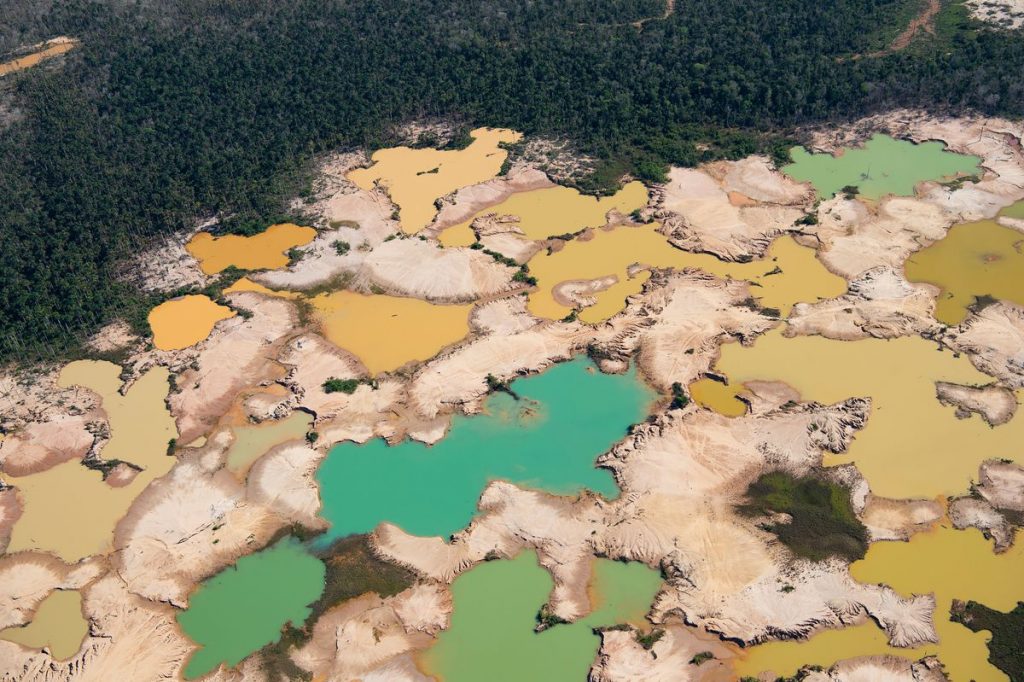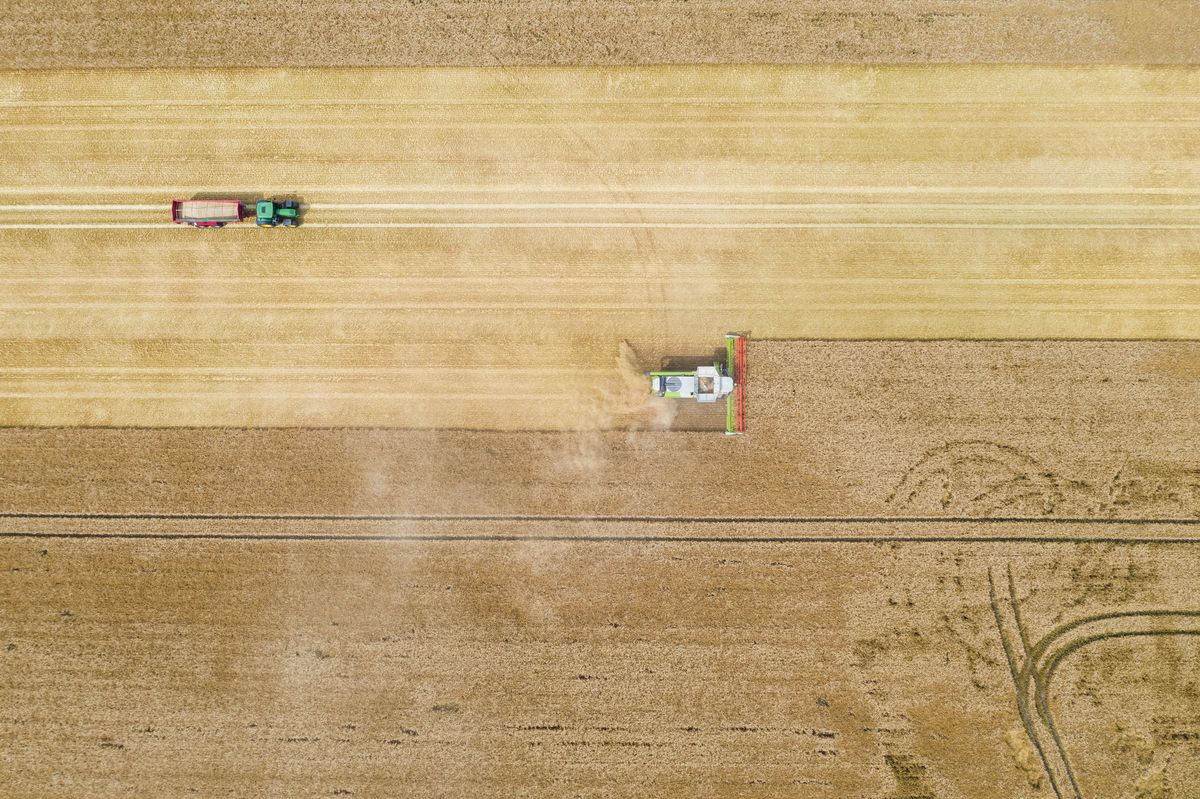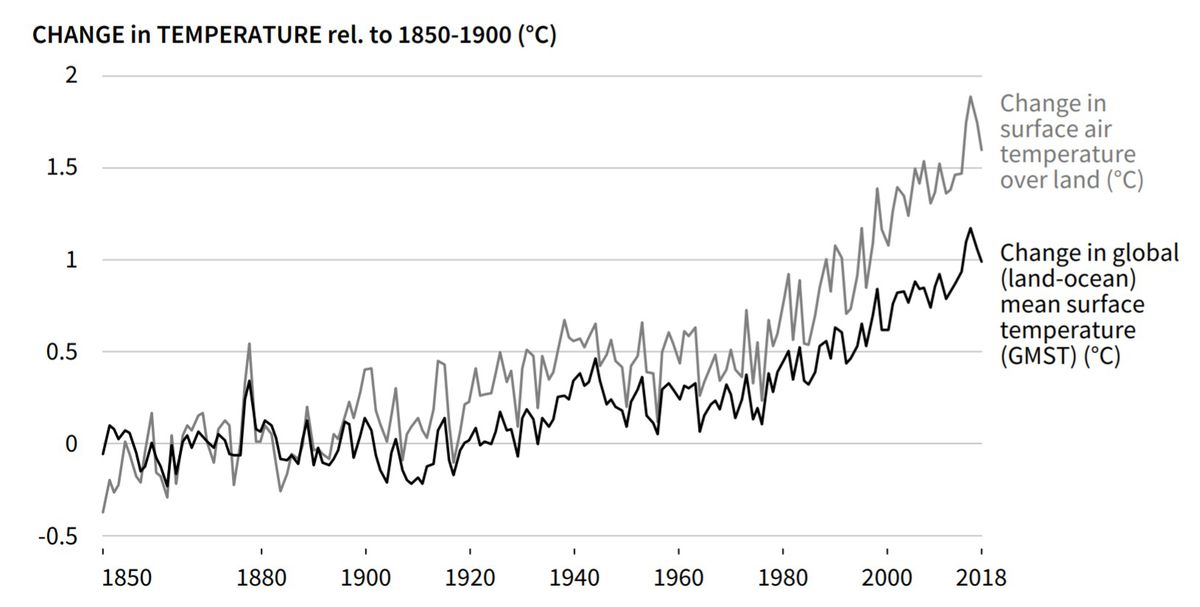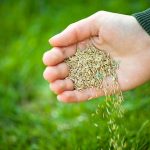Table of Contents
To combat climate change, we must make major changes to how we manage farmland, forests, and our own food, the United Nations said Thursday in a sprawling new report.
The Intergovernmental Panel on Climate Change’s special report on land, announced in Geneva, takes on two complicated questions: how land use contributes to climate change and how climate change affects land. Its scope is colossal: the 197 million square miles of land on Earth.
The conclusions lay out a crucial paradox. Humans have harnessed land to develop into the complex, highly successful species we are today. But our destructive patterns of land use — particularly agriculture, deforestation, and destruction of wetlands — now contribute 23 percent of all human-caused greenhouse gas emissions.
As those forms of land use help drive average global temperatures up, the land, and all the species that live on it, suffer: heat waves and dust storms are growing worse, for instance. Meanwhile, the various ways in which we’ve degraded forests, prairies, and shorelines around the world now put food security, human health, and ecosystems at grave risk.
“It really calls on us this think across the entire food production chain,” said Debra Roberts, co-chair of the IPCC’s Working Group II during a press conference announcing the report’s findings. “There’s no single silver bullet. It means we’re going to have to tackle complex issues and complex needs.”
The last major IPCC report, released in October, looked at what it would take to limit warming this century to 1.5 degrees Celsius above pre-industrial levels. That report found that it’s still possible, but the world may have to halve emissions by as soon as 2030, reach net-zero emissions by 2050, and become carbon-negative thereafter.
The new report shows there’s a huge opportunity to use land to emit less, restore ecosystems we’ve wrecked, and store more carbon. But it’s not simple: conserving, restoring, and better managing land requires coordination and careful planning, bridging fraught political and social fault lines. It’s also an enormous technical challenge from developing new stress-tolerant crops to optimizing where to plant trees. And there are powerful economic forces pushing the world in the wrong direction. Let’s walk through it.
What we eat and how we get it is warming the planet
Like all IPCC reports, this new report on lands doesn’t introduce new findings, but rather pools and evaluates the existing body of research. It takes input from 107 authors and examines more than 7,000 research articles. And the science shows that it’s hard to overstate how much we’ve altered the land we live on, and even the places we don’t.
“Human use directly affects more than 70% (likely 69-76%) of the global, ice-free land surface,” according to the report.
Around the world, humans have harnessed between a quarter and one-third of all land for food, feed, fiber, timber, and energy. Our species has driven the loss of of all trees since the dawn of civilization, for example. This dramatic reshaping of the Earth in turn has had a massive impact on the climate. About 22 percent of anthropogenic emissions arise from agriculture, forestry, and other land use.

Our food choices are a major driver of these changes. Half of global human-caused emissions of methane, a greenhouse gas roughly 30 times more potent than carbon dioxide, comes from agriculture, namely livestock and rice cultivation. Up to 75 percent of nitrous oxide emissions — almost 300 times more the warming potential of carbon dioxide — comes from nitrogen fertilizer.
The United States is a case in point of diets driving land use. Of the 1.9 billion acres in the 48 contiguous states, 654 million acres are used as pasture land for livestock, 538 million acres are forested, and 391.5 million acres are used to grow crops. But of that cropland, only one-fifth is used for the food we directly eat. One-third of US cropland is allocated to growing feed for livestock, like corn and soy.
The looming concern now is what will happen to the world’s lands if other countries start to adopt American tastes for burgers and hot dogs. “Emissions from agricultural production are projected to increase … driven by population and income growth and changes in consumption patterns,” according to the report.
How we use land affects the climate, and changes in the climate affect how we use land
The interplay between the land and the climate is incredibly complex. Mangroves suck carbon dioxide out of the air and bury it in the sediment below them. Swampland belches methane into the sky. Forests send out particles that trigger rain. Snow-sheathed tundra reflects sunlight back into space while rock and sand absorb heat.
And all of this activity can change depending on the region, the time of year, and the climate. “At the regional scale, changing land conditions can reduce or accentuate warming and affect the intensity, frequency and duration of extreme events,” according to the report. “The magnitude and direction of these changes vary with location and season.”
As a result, terra firma can be both a source and a sink of carbon dioxide and contribute to warming or cooling. That means changing how we use the land can serve as a valuable way to nudge the planet’s thermostat. Scientists are just starting to understand these relationships, but climate change is now shifting the baseline.
That’s particularly alarming when it comes to our food. Global warming has helped extend the growing season for plants in some parts of the world. But in others, the greater frequency of extreme heat and volatility of precipitation have damaged forests and food crops. Research also shows that more carbon dioxide in the air is making some crops less nutritious.

Current farming methods can also degrade soil more than 100 times faster than new soil is formed. That’s fueling desertification, which will make the more than 500 million people more vulnerable to further changes in the climate.
With declining land quality in some parts of the world, farmers have to devote an increasing amount of resources to grow food: more energy, more fertilizer, more water. That is also creating more demand for new land, which then drives people to repurpose more pristine areas, according to the IPCC:
Expansion of areas under agriculture and forestry, including commercial production, and enhanced agriculture and forestry productivity have supported consumption and food availability for a growing population … With large regional variation, these changes have contributed to increasing net GHG emissions … loss of natural ecosystems (e.g. forests, savannahs, natural grasslands and wetlands) and declining biodiversity.
That means pressure for more land is causing more carbon dioxide emissions and degrading nature’s ability to soak up carbon, leading to more warming. “Risks, including cascading risks, are projected to become increasingly severe with increasing temperatures,” according to the report.
The planet has already warmed between 0.8 degrees and 1 degree Celsius on average since the industrial revolution. Land areas, however, have warmed at a rate almost double the global average, about 1.5 degrees Celsius on average since 1850.

The increased carbon dioxide in the air and the warming of the planet is feeding into other changes people are making in the land, like deforestation and urbanization. Drier weather and the loss of plant cover has fueled the increasing frequency and intensity of dust storms, for example. Cities with extensive paved surfaces have diminished natural watersheds, leading to more extensive flooding. Higher temperatures are also causing permafrost to thaw, releasing, yes, more carbon.
Better land management can limit climate change, but it’s difficult to do right
Natural systems, like forests and coastal mangroves, can be a powerful tool to take in carbon dioxide and slow warming. The IPCC estimates that plants, fungi, and bacteria across the world’s land ecosystems have taken in close to 29 percent of human-sourced greenhouse gas emissions. Though further warming threatens these ecosystems, there are a number of ways to support them while also serving human needs.
One option is to restore forests. However, a forest is more than its trees; it’s the animals that spread seeds, the bacteria that fix nitrogen in the soil, and the fungi that digest decaying leaf litter. You need the whole community to create a healthy forest ecosystem, so restoring a forest requires carefully cultivating and balancing all of these elements.
The environmental upshot of doing so could be massive. One recent calculation found that forest restoration across all viable areas could soak up hundreds of billions of metric tons of carbon dioxide.
The next step beyond this is afforestation, which involves growing forests in areas where there were none before. Growing biofuel crops and coupling them with carbon capture and sequestration could also be a way to check off multiple boxes at the same time, providing energy and potentially negative greenhouse gas emissions.
But there is only so much land we can deliberately alter to curb warming before we start to run into other environmental tradeoffs. “While land can make a valuable contribution to climate change mitigation, there are limits to the deployment of land-based mitigation measures such as bioenergy crops or afforestation,” according to the report. “Widespread use at the scale of several millions of [square kilometers] globally could increase risks for desertification, land degradation, food security and sustainable development.”
Changes on such massive scales also require delving into the thorny issues of land tenure, particularly issues of property rights for marginalized communities directly impacted by large-scale environmental restoration programs. Historically, indigenous peoples and groups like women have been left out of the decision-making process for these kinds of initiatives. Without their buy-in and on-the-ground expertise, even the most well-intentioned land restoration programs could fail:
Policies that enable and incentivise sustainable land management for climate change adaptation and mitigation include improved access to markets for inputs, outputs and financial services, empowering women and indigenous peoples, enhancing local and community collective action, reforming subsidies and promoting an enabling trade system (high confidence). Land restoration and rehabilitation efforts can be more effective when policies support local management of natural resources, while strengthening cooperation between actors and institutions, including at the international level.
However, there are land-based climate change mitigation options that don’t involve negotiating over scarce resources. One relatively easy option is to reduce food waste. More than a quarter of all food produced in the world is wasted, which contributes almost 10 percent of anthropogenic emissions. Better supply chain management to limit food rotting in the field and reducing excess consumption can make a dent in food waste emissions.
Some of the biggest reductions in emissions relating to land will have to come from changing diets to consume less livestock and fewer resource-intensive crops. The IPCC estimates that making changes to how we use forests, grow crops, and raise livestock could yield upward of 9 gigatonnes of carbon dioxide emissions reductions per year by 2050. Changing diets could yield up to 8 gigatonnes in reductions:
Diversification in the food system (e.g., implementation of integrated production systems, broad-based genetic resources, and diets) can reduce risks from climate change (medium confidence). Balanced diets, featuring plant-based foods, such as those based on coarse grains, legumes, fruits and vegetables, nuts and seeds, and animal-sourced food produced in resilient, sustainable and low-[greenhouse gas] emission systems, present major opportunities for adaptation and mitigation while generating significant cobenefits in terms of human health (high confidence). By 2050, dietary changes could free several [million square kilometers] (medium confidence) of land and provide a technical mitigation potential of 0.7 to 8.0 [gigatonnes of CO2 equivalent per year], relative to business as usual projections (high confidence).
“There are certain types of diets that have a lower carbon footprint and put less pressure on land,” said Jim Skea, co-chair of IPCC Working Group III during a press conference. However, he was adamant that the report was not prescriptive. “The IPCC does not recommend people’s diets,” Skea said.
The IPCC report on lands summarizes the science, but activists see a call to action
The new report makes it clear that in addition to eliminating emissions from fossil fuels, deploying clean energy, and using energy more efficiently, countries must make changes to what they reap from the ground.
For some activists, the means we urgently need a policy response. “This IPCC report signals in flashing red lights that we need to take far better care of our forests, wetlands, grasslands, and natural places,” said Matt Lee-Ashley, a senior fellow at the Center for American Progress, in a statement. “With a football field’s worth of America’s natural areas disappearing to development every 30 seconds, policymakers must step up local and national conservation efforts and do so in a way that meets the needs of every community in the United States.”

Susan Casey-Lefkowitz, chief program officer for the Natural Resources Defense Council said in a statement that avoiding some of the worst scenarios outlined in the report would require “aggressively protecting at least 30 percent of the world’s lands and 30 percent of our oceans by 2030 if we are to avert, and not hasten, the worst impacts of the climate crisis.”
However, the window to act is closing, and once it does, it may be irreversible. In a call with reporters ahead of the release of the IPCC report, Carlos Nobre, a senior fellow at the World Resources Institute Brasil, warned that the rapid loss of tropical rainforests is especially concerning given how much carbon these ecosystems store and how quickly they are being lost.
Recent reports have showed that the Amazon rainforest is losing a soccer field-sized area every minute. Once deforestation reaches around 25 percent, the forest may not be able to move enough water to sustain itself and may degrade into a savanna, releasing gobs of carbon into the air. Right now, the Amazon has seen roughly 15 to 17 percent deforestation. “The Amazon may be closer to a tipping point than every before,” Nobre said.
Posts from the same category:
- None Found









